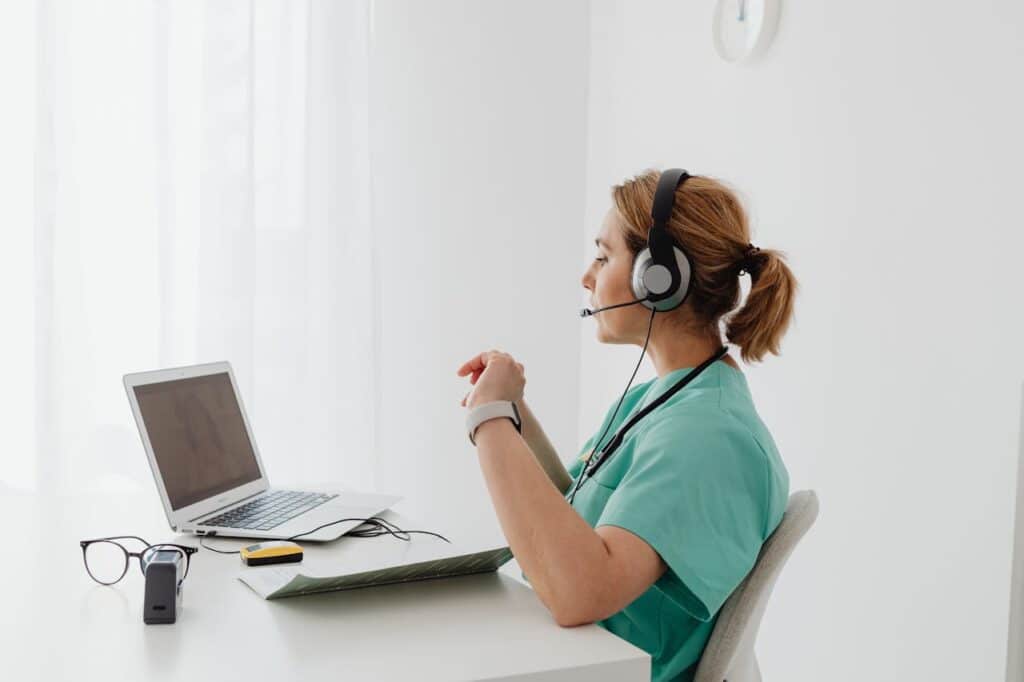In today’s healthcare landscape, seeking a second medical opinion has become increasingly common.
Medical mistakes and differing interpretations of test results can lead patients to seek additional expertise and confirmations of their diagnoses and treatment plans.
This is where medical second opinion platforms come into play.
These platforms connect patients with remote physicians and healthcare providers, allowing them to receive consultations and opinions from experts in their respective fields.
In this comprehensive guide, we will explore the process of building a medical second opinion platform, including the benefits, market trends, key features, and important regulations to consider.
The Growing Demand for Medical Second Opinion Platforms
The demand for medical second opinions is on the rise, with studies suggesting that up to nearly 80% of patients seek a second opinion at some point in their healthcare journey.
Patients seek second opinions for various reasons, including the need for a more accurate diagnosis, confirmation or adjustment of treatment strategies, improved recovery prognosis, access to additional expertise or advice, exploration of alternative treatment methods, discovery of additional treatment options, and the possibility of changing an inaccurate initial diagnosis.
Medical second opinion platforms address these needs by providing a platform for remote consultations and collaborations between patients and healthcare professionals.
According to a research conducted by LP Information, the global market for medical second opinions is projected to reach over $7 billion by 2024 [1], indicating a significant growth opportunity for healthcare providers.
The United States currently holds the largest market share, accounting for 41% of the consumption market [1].
By developing a virtual medical second opinion platform, healthcare organizations can tap into this growing market and provide a valuable service to patients.
The Benefits of Medical Second Opinion Platforms
Building a medical second opinion platform offers numerous benefits for both healthcare providers and patients.
Let’s explore some of these benefits in detail:
- Improved Quality of Medical Care
Medical second opinion platforms have the potential to significantly improve the quality of medical care by connecting patients with a network of medical professionals across a country or internationally.
By receiving multiple perspectives and opinions, patients can benefit from accurate diagnoses, tailored treatment plans, and better medical outcomes.
Studies have shown that second opinions often lead to changes in diagnoses and treatment plans.
By providing access to a diverse pool of medical experts, virtual (web-based) second opinion platforms ensure that patients receive the best possible care.
- Increased Accessibility to Healthcare
Virtual medical second opinion platforms address the issue of healthcare accessibility, particularly for patients in rural areas with limited access to specialized medical professionals.
These web-based platforms eliminate geographical barriers by connecting patients with healthcare providers remotely via the Internet.
Patients no longer have to travel long distances or wait weeks for in-person appointments with specialists.
This increased accessibility ensures that patients receive timely medical advice and treatment options, regardless of their location.
- Streamlined Data Exchange
Medical second opinion platforms streamline the exchange of medical data between healthcare facilities, physicians, and patients.
By integrating with electronic health records (EHRs) and electronic medical records (EMRs), these platforms facilitate the secure and efficient transfer of patient information.
This streamlining of data exchange enables doctors to make more informed medical decisions and reduces the time patients have to wait for their medical records to be reviewed.
- Additional Revenue Stream for Healthcare Providers
Developing a medical second opinion platform can also provide an additional revenue stream for healthcare providers.
Remote consultations and streamlined document-sharing processes require less time compared to in-person examinations.
This increased efficiency, coupled with the high demand for virtual medical care, presents a significant revenue potential for healthcare organizations.
By offering virtual second opinion services, providers can generate revenue while providing valuable healthcare services to patients.
Important Regulations for Medical Second Opinion Platforms
When building a medical second opinion platform, healthcare providers must adhere to various regulations to ensure compliance and protect patient privacy.
Let’s take a look at some of the key regulations that healthcare organizations should consider:
- Health Insurance Portability and Accountability Act (HIPAA)
HIPAA is a federal U.S. law that governs the privacy and security of protected health information (PHI).
All healthcare providers must comply with HIPAA’s Privacy and Security Rules, which include implementing technical safeguards, such as role-based access control and secure data sharing technologies.
Complying with HIPAA is crucial to protect patient data and avoid potential fines, which can amount to up to $1.5 million per year.
- Health Information Technology for Economic and Clinical Health Act (HITECH)
HITECH is a federal law that promotes the implementation of electronic health records (EHRs) and the protection of healthcare data.
It is essential to familiarize yourself with HITECH to ensure that your medical second opinion platform is compliant with the requirements for EHR implementation and data security.
- Federal Food, Drug, and Cosmetic Act (FFDCA)
The FFDCA governs the use of medical products and devices, including medical software.
Any medical device or software, including medical second opinion platforms, must obtain certification from the U.S. Food and Drug Administration (FDA) to ensure safety and efficacy.
- International Organization for Standardization (ISO) Standards
ISO 27001 and ISO 27002 are international information security standards that help improve information security, risk assessment, and data integrity.
Following these standards can enhance the technical safeguards of your medical second opinion platform and assist in complying with HIPAA’s Security Rule.
Additional regulations may apply based on your target audience and geographical location.
It is crucial to stay informed about relevant laws and standards, such as the General Data Protection Regulation (GDPR) for providing services to European Union residents, to ensure full compliance with all legal requirements.
Key Features of a Medical Second Opinion Platform
To build an effective and user-friendly medical second opinion platform, it is important to include key features that cater to the needs of both healthcare providers and patients.
Here are some essential features to consider:
- Patient Registration and Document Management
A patient registration system is crucial for onboarding patients onto the platform.
This system should allow patients to create accounts, provide necessary personal information, and securely upload and manage their medical records, test results, and other relevant documents.
Implementing a secure document management system ensures that patient data is protected and easily accessible to healthcare professionals.
- Physician Registration and Profile Management
Physician registration and profile management features enable healthcare professionals to create accounts, provide their credentials, specialties, experience levels, and other professional details.
This information helps patients make informed decisions when selecting a healthcare provider for their second opinion.
Additionally, physicians should be able to manage their profiles, update their information, and set their availability for consultations.
- Secure Communication Channels
The platform should provide secure communication channels, such as video conferencing and chat features, to facilitate remote consultations between patients and healthcare professionals.
These features allow for real-time communication, enabling doctors to examine visible medical conditions and answer patient questions.
The ability to record video consultations can also be beneficial for future reference and review.
- Scheduling Tools
Scheduling tools are essential for patients to conveniently book appointments with healthcare professionals.
The platform should provide a user-friendly interface that allows patients to view available time slots, select their preferred time, and receive appointment reminders.
Integrating with calendar apps or sending automatic reminders can help ensure that patients do not miss their scheduled consultations.
- Payment System Integration
Integrating a secure payment system into the platform allows patients to make online payments for the services they receive.
The payment system should support various payment methods and provide transparency regarding pricing and insurance coverage.
Additionally, the platform should track payments and billing information to streamline the financial aspects of the second opinion process.
- Knowledge Base and Support Portal
Providing a knowledge base and support portal can help patients navigate the platform and find answers to frequently asked questions.
The knowledge base should contain information about the services offered, payment rates, insurance coverage, and other relevant details.
Additionally, offering customer support through live chat or AI-powered chatbots can enhance the user experience and address patient inquiries effectively.
- Integration with Electronic Health Records (EHRs)
Integrating the platform with electronic health records (EHRs) allows for seamless data exchange between healthcare facilities and organizations.
This integration ensures that healthcare professionals have access to all relevant patient information and can make informed medical decisions.
It also reduces the need for duplicate tests and procedures, saving time and resources.
Developing a Medical Second Opinion Platform: Tech Stack and Considerations
Building a medical second opinion platform requires careful consideration of the technology stack and development process.
Here are some key factors to keep in mind:
- Tech Stack
Choosing the right tech stack is crucial for the successful development of a medical second opinion platform.
The tech stack should include technologies that enable secure data management, real-time communication, and seamless integration with other systems.
Some technologies commonly used in healthcare software development include:
- Front-end: HTML, CSS, JavaScript, React, Angular, Vue.js
- Back-end: Node.js, Python, Ruby on Rails, PHP
- Database: MySQL, PostgreSQL, MongoDB
- Cloud Infrastructure: Amazon Web Services (AWS), Microsoft Azure, Google Cloud Platform
- Communication: WebRTC, Twilio
- User Experience (UX) Design
User experience design plays a critical role in the success of a medical second opinion platform.
The platform should have an intuitive and user-friendly interface, making it easy for patients and healthcare professionals to navigate and use the features.
Conducting user research and testing can help identify pain points and improve the user experience throughout the development process.
- Security and Compliance
Security and compliance are paramount when dealing with sensitive healthcare data.
Implementing robust security measures, such as encryption, access controls, and data anonymization, is essential to protect patient information.
Compliance with regulations like HIPAA and other relevant standards should be a priority throughout the development process.
- Scalability and Performance
A medical second opinion platform should be designed to handle a growing user base and increasing data volume.
Scalability and performance considerations should be addressed from the early stages of development to ensure that the platform can handle high traffic and provide a seamless user experience.
Conclusion
Building a medical second opinion platform offers significant benefits for healthcare providers and patients alike.
By leveraging technology and remote communication, these platforms improve the quality of medical care, increase accessibility to healthcare services, streamline data exchange, and provide additional revenue streams for healthcare providers.
However, it is crucial to navigate the regulatory landscape and adhere to important regulations, such as HIPAA and FDA requirements, to ensure compliance and protect patient privacy.
By incorporating key features, such as patient and physician registration, secure communication channels, scheduling tools, payment system integration, and integration with EHRs, healthcare organizations can develop a comprehensive and user-friendly medical second opinion platform.
With careful consideration of the tech stack, user experience design, security, and scalability, providers can have a platform that meets the needs of patients and healthcare professionals in the ever-evolving healthcare landscape.
Remember, seeking a medical second opinion is a valuable and proactive step in healthcare decision-making.
It provides patients with the opportunity to gain additional expertise, confirm diagnoses, explore treatment options, and ultimately make informed decisions about their health.
By building a medical second opinion platform, healthcare providers can empower patients and contribute to improved healthcare outcomes.
References:



